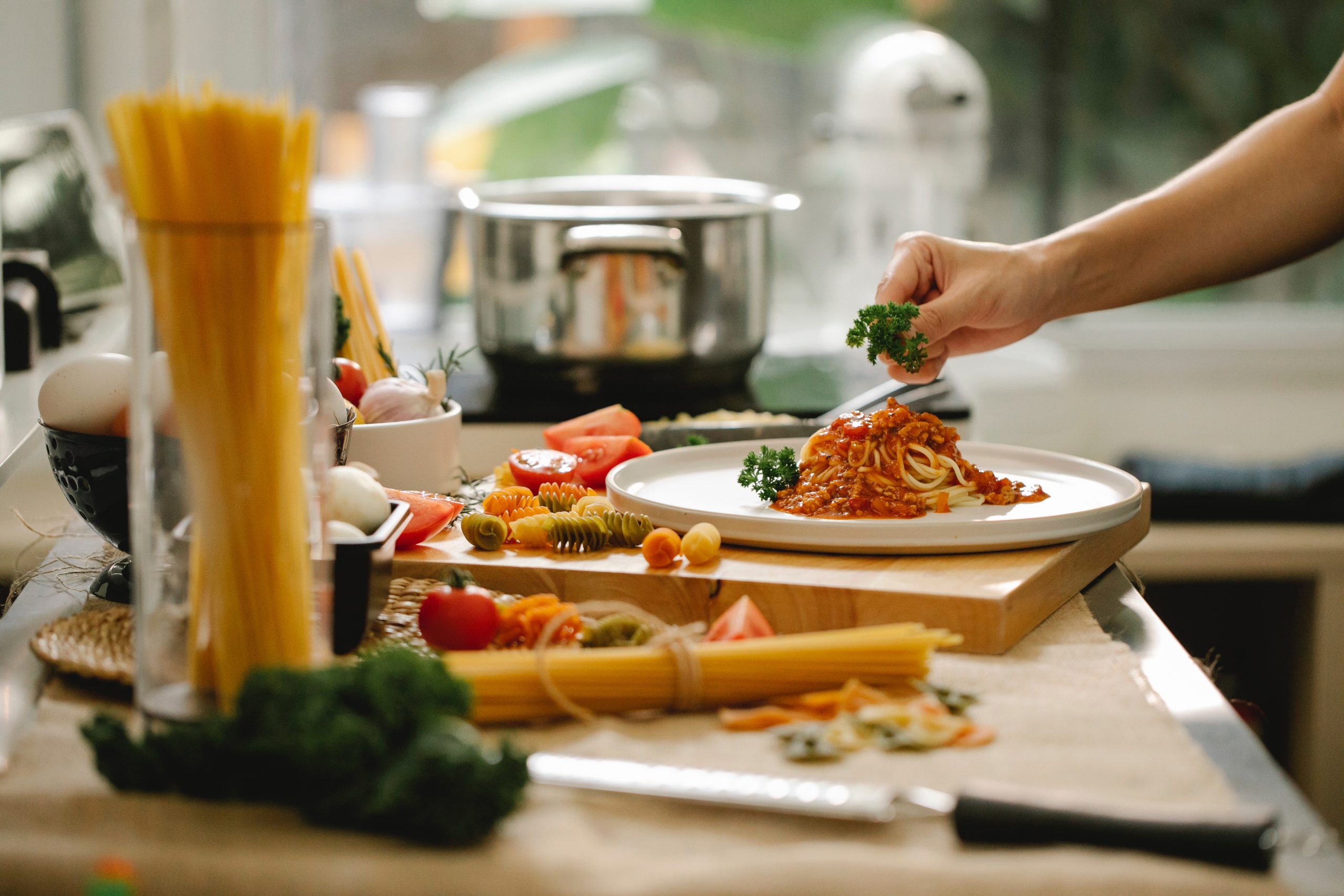
I’m sure many of us enjoy cooking at home, and cooking for our families brings simple pleasures. However, ensuring safety can be easily overlooked and food germs are hiding in our kitchens. With so many Americans getting sick every year, home cooking safety is very important.
Think about where the ingredients first come in, your hands are constantly touching the food and this is our best line of defence. Washing your hands comes first, and it’s easy. It stops germs from spreading around, so wash your hands before preparing any food.
Washing your hands just once is not enough; you should wash them several times while cooking. For example, after handling raw meat or eggs. Also, the telephone is a bad place for germs to thrive – after all, it’s not uncommon to get a sudden call while cooking sometimes. Chefs say wash your hands before and while cooking. Lather up well with soap for about twenty seconds. This small act goes a long way to safety.
There is another area of concern – cutting boards – that is also very important to us. It is not right to use the same cutting board to cut raw meat and salad. This can easily spread bacteria between foods, and cross contamination is how it often happens. It’s always best to have two chopping boards on hand.

The Importance of Tool Cleaning
Using different boards is a smart way to do this. For example, one colour is only used for meat. Also clean your knives after cutting raw meat and all tools that come into contact with raw meat need to be cleaned. You should keep an extra eye out in the kitchen, cleaning helps keep everyone safe.
There is also the risk of putting cooked food back on the raw plate. For example, putting a grilled steak on a raw steak tray can spread germs quickly. It seems obvious, but it happens all the time. Use a clean plate for a well-done burger. Simple advice but a big solution to a big problem.
Utensils such as tongs are also important. Forks and spatulas also need attention. Experts clean tongs after touching raw chicken. Use clean tools to handle food that has been cooked.

Simple Homemade Pancakes
Equipment
- 1 Large Mixing Bowl
- 1 Whisk or fork
- 1 Non-Stick Skillet or Griddle
- 1 1/4 cup Measuring Cup For portioning batter
- 1 Spatula For flipping pancakes
Ingredients
Main
- 1 cup flour
- 1 tablespoon sugar
- 1 teaspoon baking powder
- 1/2 teaspoon baking soda
- Dash of salt
- 1 cup buttermilk
- 1 egg
- 3 tablespoons melted butter
Instructions
- In a large mixing bowl, stir together the flour, sugar, baking powder, baking soda and salt. Using a whisk or large fork, mix in the buttermilk and egg until well combined and smooth. Stir in the melted butter.
- Heat non-stick skillet or griddle over medium heat. Using a 1/4 cup measure, pour pancake batter onto hot griddle. When pancake is golden brown, flip to cook other side. Keep warm in oven heated to 275 degrees.
- Variations: Blueberry and banana pancakes: Stir in 1 cup fresh berries into batter.
Notes
Bacterial risks associated with washing raw meat
Do you clean raw chicken first? Experts strongly advise against this. Raw meat can be cooked straight away. Cleaning doesn’t make it safer, it only removes small marks from the surface.
Cleaning chicken can create a big mess. Spills can get bacteria all over the sink. Bacteria can get on countertops and nearby dishes, and salmonella can spread where you can’t see it. It’s hard to remove later.
If it’s already happened, sanitise your kitchen surfaces. A cleaner that kills germs well helps a lot, use household sprays that are around. Simple soap and water also cleans well.

How to defrost correctly – to avoid bacterial proliferation
How you thaw frozen meat is very important. It is not safe to leave food on the counter. Raw meat has bacteria on it, and cold stops these bacteria from growing.
There is a danger zone for the temperature range of food. Temperatures range from 41 to 135 degrees, where bacteria grow very quickly. The outside of frozen food warms up first and bacteria begin to multiply in these areas.
There is a safe way to defrost food. Choosing to use cold running water is fine. Also, thaw while cooking if possible. If cooking immediately, microwave it. Experts say these methods are effective. Please avoid hot water immersion, which is just as risky as the counter.
It is important to follow the correct procedure when using a microwave oven, this is because a microwave oven does not cook food evenly. Some parts get hot and others stay cold, which can be harder to control. This is dangerous for uncooked food.
You need to know your microwave oven completely before using it and follow all the package instructions to the letter. It really helps to know its wattage and stir the food halfway through to better even out the heat.

Safe handling of leftovers
Leftovers are delicious, but they need to be handled with care. It’s common to put hot food straight into the fridge. This method is quick, but there are risks. Food cools too slowly in the fridge and food tends to stay warm while in the danger temperature zone.
Cool leftovers quickly beforehand and don’t pack large quantities of hot food immediately. Please cool them before refrigerating. You can serve some ice water on a metal tray; metal dissipates heat effectively. These food safety habits are very effective and they ensure that the food you cook is safe to eat.
Related posts:
Experts Say These Are The Most Common Food Safety Mistakes Among Home Cooks, And I’m Guilty Of A Couple
Never Make These Mistakes When Cooking Bacon
Mistakes Everyone Makes When Grilling Steak




